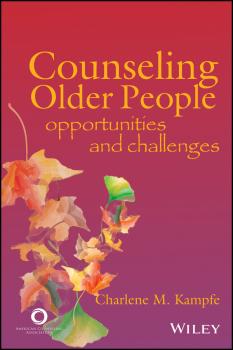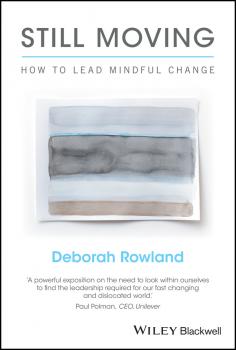ТОП просматриваемых книг сайта:
Общая психология
Различные книги в жанре Общая психология, доступные для чтения и скачиванияАннотация
Comprehensive and engaging, this extensively revised edition of a student and instructor favorite introduces the basics of critical thinking using the claims of pseudoscience and the paranormal. Guides readers through the critical thinking process by considering different types of support (sources, logic, and scientific observation) and ruling out alternative explanations Allows students to practice and apply their new critical thinking skills on claims of extraordinary cures including energy treatments, complementary/alternative medicine and faith healing as well as four paranormal claims of consequence: astrology, spiritualism and the afterlife, parapsychology, and creationism. Couples a conversational, nontechnical narrative with student-friendly pedagogical tools, including critical thinking questions, a study guide for each chapter, and a companion website Provides clear and open-minded discussions of the paranormal spectrum, belief justification surveys, the placebo effect, and the relationship between religion and critical thinking
Positive Psychology in Practice. Promoting Human Flourishing in Work, Health, Education, and Everyday Life - Stephen Joseph
Аннотация
The best minds in positive psychology survey the state of the field Positive Psychology in Practice, Second Edition moves beyond the theoretical to show how positive psychology is being used in real-world settings, and the new directions emerging in the field. An international team of contributors representing the best and brightest in the discipline review the latest research, discuss how the findings are being used in practice, explore new ideas for application, and discuss focus points for future research. This updated edition contains new chapters that explore the intersection between positive psychology and humanistic psychology, salugenesis, hedonism, and eudaimonism, and more, with deep discussion of how the field is integrating with the new areas of self-help, life coaching, social work, rehabilitation psychology, and recovery-oriented service systems. This book explores the challenges and opportunities in the field, providing readers with the latest research and consensus on practical application. Get up to date on the latest research and practice findings Integrate positive psychology into assessments, life coaching, and other therapies Learn how positive psychology is being used in schools Explore possible directions for new research to push the field forward Positive psychology is being used in areas as diverse as clinical, counseling, forensic, health, educational, and industrial/organizational settings, in a wide variety of interventions and applications. Psychologists and other mental health professionals who want to promote human flourishing and well-being will find the second edition of Positive Psychology in Practice to be an informative, comprehensive guide.
Аннотация
FULLY REVISED, COMPREHENSIVE, AND PRACTICAL Learning the Language of Addiction Counseling, Fourth Edition introduces counselors, social workers, and students to the field of addiction counseling and helps them acquire the knowledge and develop the skills needed to counsel individuals who are caught in the destructive cycle of addiction. Drawing from her years of experience working in the addiction-counseling field, Geri Miller provides an engaging, balanced overview of the major theoretical foundations and clinical best practices in the field. Fully updated, the Fourth Edition offers a positive, practice-oriented counseling framework and features: A research-based, clinical application approach to addiction counseling that practitioners can turn to for fundamental, practical, clinical guidelines Revised chapters that reflect important changes in research and practice, including new DSMTM-5 criteria, new assessment instruments, and new and expanded treatments Case studies, interactive exercises, end-of-chapter questions, and other resources that facilitate the integration of knowledge into practice “Personal Reflections” sections at the beginning of each chapter provide an invaluable, unique perspective on the author’s evolving views of addiction counseling Updated and expanded online Instructor’s Manual that includes brief video clips, PowerPoint® slides, test bank questions for each chapter, and sample syllabi From assessment and diagnosis of addiction to preparing for certification and licensure as an addiction professional, this comprehensive book covers all of the essentials.
Аннотация
An all-inclusive, practical guide to help you design, conduct, and finish your academic dissertation—with minimal drama Sharing the secrets for successfully navigating through the dissertation and thesis process while maintaining your sanity, Finish Your Dissertation, Don't Let It Finish You! presents comprehensive coverage of the entire dissertation process, from selecting a committee and choosing a research topic to conducting the research and writing and defending your dissertation. Joanne Broder Sumerson follows the sequential flow of a dissertation, to help you move through the process in a logical, step-by-step manner, with an abundance of practical examples and useful tips on: Proper dissertation etiquette—smarts and strategies for managing the committee Breaking ground on your study The anatomy of the five chapters of your dissertation Making a compelling argument for why your study should be done Creating an exemplary literature review The best practices in research design Getting official approval from the Institutional Review Board Organizing your freshly collected data Concluding your dissertation Presenting a smooth oral defense
Аннотация
The definitive guide to identify, assess, and create individualized treatment plans for high-risk clients who suffer from challenging co-occurring disorders «Treat the person and not the diagnosis. Respect that all behaviors are purposeful. Remain mindful that nobody changes behaviors without motivation. These essential guiding principles are the framework of this book. They will be repeated quite often as we examine the challenging population of men and women with co-occurring disorders.» —From Integrated Treatment for Co-Occurring Disorders Annual studies reveal that 70 percent of men and women who died by suicide were diagnosed with a mental illness or personality disorder and used drugs to gain temporary relief from the symptoms. Until now, very little has been written about how to identify, assess, and treat this population. Integrated Treatment for Co-Occurring Disorders: Treating People, Not Behaviors addresses that need. Respectful of the client and filled with practical advice, this book: Examines the guiding principles for treating clients with co-occurring disorders Details the methods of formulating an evidence-based individualized treatment plan for the self-medicating mentally ill Explores how to assess this population for suicide risk and vulnerability Focuses on the person and not a behaviorally defined diagnostic category Reflects state-of-the-art knowledge for the treatment of co-occurring disorders Illustrates how Motivational Enhancement Therapy can be an effective treatment strategy With numerous clinical case studies to illustrate key points and reinforce learning, Integrated Treatment for Co-Occurring Disorders encourages a flexible, person-centered treatment approach that focuses on the individual rather than the diagnosis.
Аннотация
New edition of an acclaimed manual which uses the solution focused approach to take an empathetic and validating approach to working with individuals considering suicide. Offers invaluable guidance for suicide prevention by showing “what works” in treating those struggling with suicidal thoughts Provides straightforward ways to deal frankly with the subject of suicide, along with a range of tools and techniques that are helpful to clients Includes actual dialogue between practitioners and clients to allow readers to gain a better understanding of how to work with suicidal clients Compares and contrasts a ground-breaking approach to suicide prevention with more traditional approaches to risk assessment and management Features numerous updates and revisions along with brand new sections dealing with the international landscape, blaming the suicided person, Dr Alys Cole-King’s ‘Connecting with People’, and telephone work with the suicidal, Human Givens Therapy, and zero suicide
Аннотация
This book provides insight into the primary issues faced by older adults; the services and benefits available to them; and the knowledge base, techniques, and skills necessary to work effectively in a therapeutic relationship. Dr. Kampfe offers empirically and anecdotally based strategies and interventions for dealing with clients’ personal concerns and describes ways counselors can advocate for older people on a systemic level. Individual and group exercises are incorporated throughout the book to enhance its practicality. Topics covered include an overview of population demographics and characteristics; counseling considerations and empowering older clients; successful aging; mental health and wellness; common medical conditions; multiple losses and transitions; financial concerns; elder abuse; veterans’ issues; sensory loss; changing family dynamics; managing Social Security and Medicare; working after retirement age; retirement transitions, losses, and gains; residential options; and death and dying. *Requests for digital versions from the ACA can be found on wiley.com. *To request print copies, please visit the ACA website.
Аннотация
This widely adopted, seminal text provides comprehensive direction from leading experts for culturally competent practice with diverse client groups in a variety of settings. Fully updated—with seven new chapters and including feedback from educators and practitioners—this book goes beyond counseling theory and offers specific information and effective techniques for work with the following client groups: American Indians African Americans Asian and Pacific Islanders Latinos/as Arab Americans Multiracial individuals and families Women and men Older adults LGBQQT clients People with disabilities Deaf children and their families Socioeconomically disadvantaged clients Military personnel *Requests for digital versions from the ACA can be found on wiley.com. *To request print copies, please visit the ACA website.
Аннотация
Still Moving: How to Lead Mindful Change sets out an innovative approach for guiding organisations and indeed entire systems through ongoing, disruptive change. It combines Deborah Rowland's own rigorous research into change and its leadership with insights from her extensive field experience helping major global corporations including GlaxoSmithKline, RWE and Shell achieve lasting change with increased productivity, employee engagement and responsible societal impact. It is filled with helpful inspiring stories of leadership and change from the real world and, bravely, the author's own personal journey. Challenging leaders to cultivate both their inner and outer skills necessary for success, Still Moving weaves together the “being” and “doing” of states of leading change and emphasises the importance of a mindful stance and deep systemic perception within a leader. With the goal of collaborative, sustainable change, the book delves into a variety of important topics, including present-moment awareness, intentional response, edge and tension and emergent change. Compelling and provocative, Still Moving questions the conventional wisdom of much change theory and asks that leaders first work on their inner source in order to more effortlessly change the world around them.
Аннотация
Written by a practitioner with over 25 years of experience, Living Mindfully shows how mindfulness can be integrated with coaching in order to enhance motivation and achieve an authentic life. Combines mindfulness techniques designed to explore an individual’s relationships to thoughts, values and emotions with coaching strategies that build self-confidence and motivation Details the Living Mindfully program and the practical coaching intervention, Training Individuals in Mindfulness and Excellence (TIME), with tips, exercises, further resources and client testimonials Discusses important aspects of mindfulness, including awareness, staying present, acceptance, authenticity, and dealing with negative beliefs and emotions Outlines the requirements for setting up and maintaining a mindfulness program for mindfulness teachers, coaches, counselors, policymakers, and government departments










